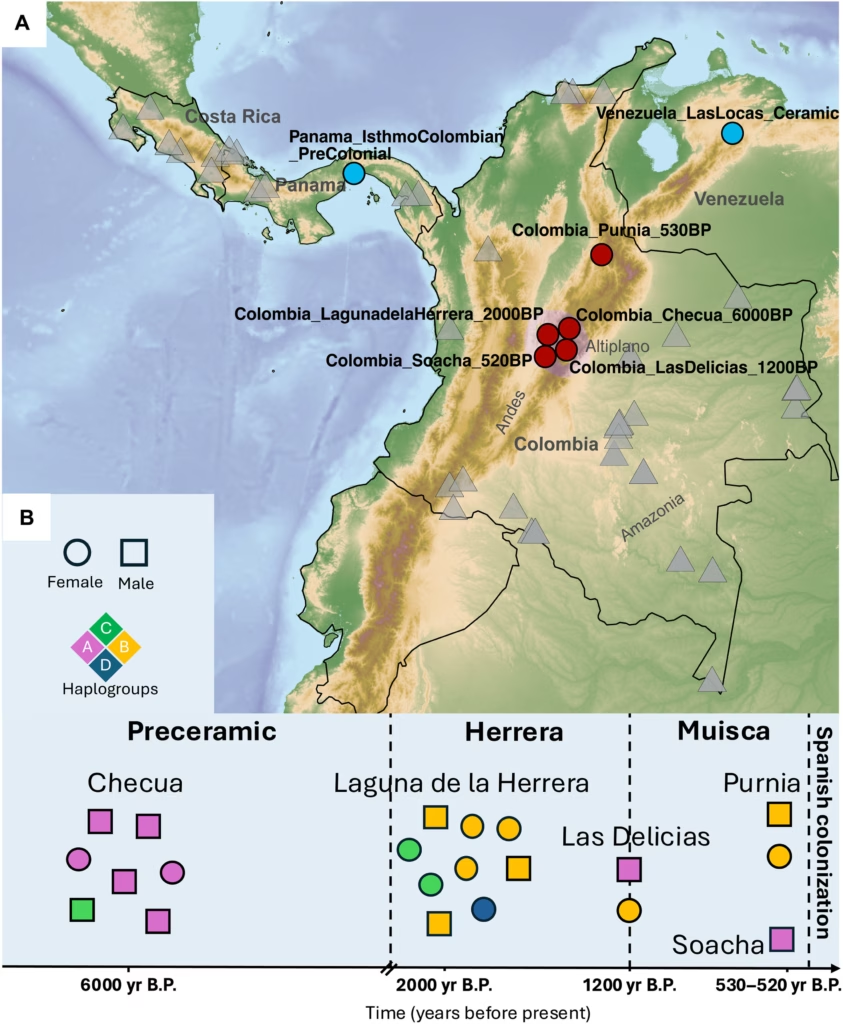A groundbreaking genetic study in Colombia’s Altiplano region reveals that the first human groups who settled there left no genetic traces behind. DNA samples dating back 6,000 years show a complete population replacement in South America’s settlement history.
Researchers from the University of Tübingen, the Senckenberg Center for Human Evolution and Paleoenvironment, and the National University of Colombia analyzed ancient DNA from 21 individuals excavated from five archaeological sites across Colombia’s Altiplano region. The findings indicate that the first hunter-gatherer populations who arrived from the north and spread across South America eventually vanished without genetic continuity. This research was published in the prestigious journal Science Advances.
No Genetic Legacy from the Earliest Settlers
The ancient remains from the Checua archaeological site, located about 3,000 meters above sea level near Bogotá, date back approximately 6,000 years. These individuals belonged to the earliest wave of human migration into South America. However, researchers found that their genetic lineage completely disappeared around 2,000 years ago.

Lead author Kim-Louise Krettek explains, “The Checua individuals represent the earliest population in South America. Yet, we found no genetic descendants of this group in later populations. This points to a complete population turnover in the Altiplano region.”
A Second Migration from Central America
Genetic evidence shows that the Altiplano was later repopulated by a second group migrating from Central America. This wave likely introduced new cultural traits such as pottery technology and the Chibcha language family, which is still spoken in some parts of Central America today.
Andrea Casas-Vargas from the National University of Colombia notes, “Such a significant genetic break is rare in South America, where genetic continuity is common in the Andes and Southern Cone populations. However, the Altiplano region stands out as an exception.”

Ethical Research and Collaboration with Indigenous Communities
The research team was mindful of the sensitive implications these findings may have on indigenous identity. Throughout the study, they maintained ongoing dialogue with the local Muisca communities, descendants of the ancient Muisca culture. Professor Cosimo Posth, senior author of the study, stresses, “Genetic ancestry should not be equated with cultural identity. We respect and value the rich cultural heritage of indigenous peoples in all our work.”
Redrawing South America’s Genetic Map
When combined with recent ancient DNA studies from Peru, Chile, and Brazil, these findings reveal that human settlement in South America was far from uniform, exhibiting pronounced regional differences.
The complete population replacement uncovered in Colombia exemplifies how interdisciplinary research blending archaeology and genetics can challenge long-held assumptions about the continent’s past.
https://doi.org/10.1126/sciadv.ads6284
University of Tübingen
Cover Photo: Skeletons of two hunter-gatherer individuals excavated at the archaeological site of Checua (Bogotá Altiplano)





